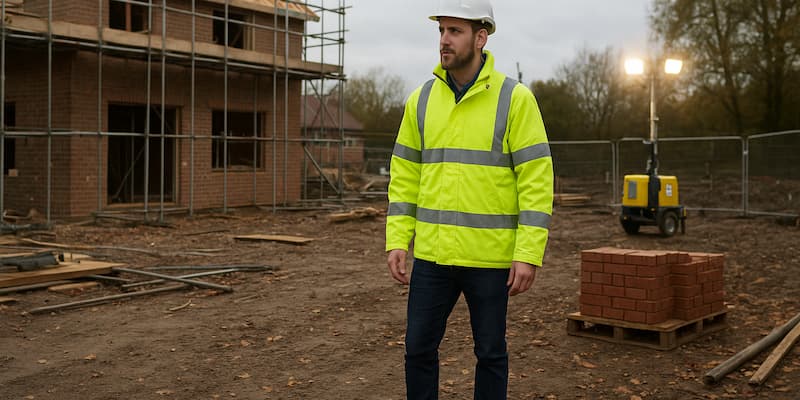
By Roger Munn 12/09/2017
Under: Site Set Up / Team Welfare / Health and Safety NewsAutumn Health & Safety Check: Is Your Team Prepared?
Autumn is a time of transition – it’s tempting to overlook the risks and focus your attention on the threats of the coming Winter instead. However, Autumn poses some unique healthy and safety challenges which are not to be neglected. Get your Autumn strategy right and you’ll also be ahead of the game when Winter does arrive.
Cold Weather Workwear
The temperature can drop dramatically in Autumn and those working outside are at risk. The transition stage can catch people off guard if they’re used to dressing for warmer days.
Make sure your team is kitted out with well-fitting cold weather workwear like jackets and body-warmers before the temperature starts to drop. Of course, Autumn can also bring milder days and warmer weather – layering is a good strategy to ensure teams can adjust to changeable conditions.
Autumn is also the time to prepare for Winter – fleeces, heavier coats and thermal under clothing should be on your list for outdoor teams.
High Visibility Clothing
In some workplaces – such as construction and highway maintenance – high visibility workwear is a year-round consideration. However, once days start to shorten and murky weather conditions are more likely, ensuring your team is clearly visible becomes even more of a challenge.
At risk teams should have sufficient high visibility clothing to make sure they are always safe and seen. Pay special attention to teams working at night, dawn or dusk, when visibility is poor.
A cleaning schedule is vital. Without regular washing, dirt and debris can cover the reflective material and compromise the effectiveness of high visibility wear.
Need additional visibility? Try a Visilite Hard Hat Illumination System.
High Grip Footwear
Wet leaves, ground frost and icy conditions can cause surfaces to become slippery in Autumn. Wherever possible, these hazards should be cleared from worksites. Gritting and salting strategies may be needed to prevent dangerous ice. In addition to risk minimisation, anti-slip safety shoes are a must to ensure workers have sufficient grip underfoot.
Other equipment which requires firm grounding, such as ladders or vehicles, may also need additional grip equipment.
SAD Awareness
As the days shorten and the weather worsens, the risk of Seasonal Affective Disorder (SAD) increases. SAD is a type of depression believed to be partly caused by lack of exposure to natural sunlight. Sufferers may experience symptoms including low mood, lethargy, lack of motivation and irritability.
The risk is highest for those that work inside or on night shift patterns, as their opportunities for sunlight exposure are decreased even further.
READ UP: MENTAL HEALTH IN CONSTRUCTION – HOW TO BEAT SAD
High Risk Weather Watch
Autumn brings an increased likelihood of adverse weather conditions including heavy rain, flooding and strong winds. Outdoor workers are the most vulnerable. Assess the risks to those who could be exposed to bad weather during work tasks and put protection measures in place or discontinue work until conditions improve.
Work at height is a key area to watch when the weather gets bad as workers are more exposed to risks. Never carry out work at height in strong winds or storms.
Enfield Safety – no one works harder to bring you health, safety and welfare products at the right price, on time, every time.

.jpg)
